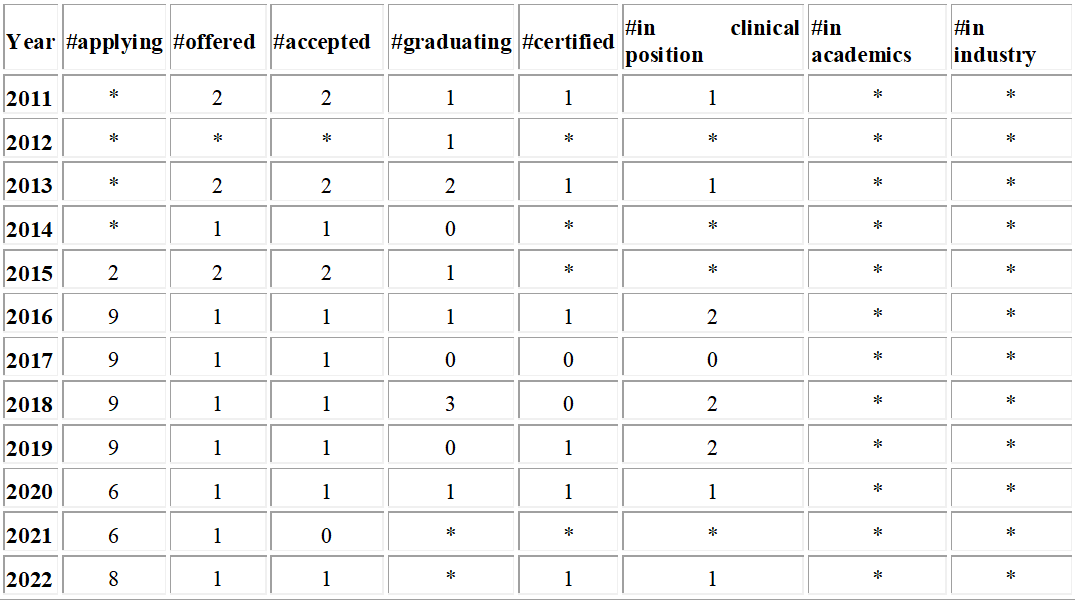About the Department
The goal of the Department of Medical Physics is to provide high quality care, delivered efficiently to radiation therapy patients through innovation, collaboration and rigourous quality assurance.
The Juravinski Cancer Centre (JCC) clinical environment includes a total of 11 linear accelerators (8 Varian TrueBeams, 2 Varian Halcyons and a CyberKnife), 3 CT simulators, an MR simulator, an HDR unit, an orthovoltage unit and multiple treatment planning systems. The Department of Medical Physics is comprised of 25 staff including: Medical Physicists, Physics Assistants, Biomedical Technologists, a Program Coordinator and a Systems Analyst. The Department annually reviews more than 4000 radiation treatment plans and more than 300 stereotactic treatments, as well as supporting more than 800 brachytherapy fractions. In addition, the Department has an active role at McMaster University; eight of the Medical Physicists have appointments at McMaster. These staff support many courses at McMaster, mentor medical physics residents and medical physics graduate students. The Department of Medical Physics also supports other learners, such as radiation oncology residents and radiation therapy students.
Medical Physicists
Gordon Chan
Thomas Chow
Sahar Darvish Molla
Kevin Diamond
Priscilla Dreyer
Thomas Farrell
Robert Hunter
Baochang Liu
Orest Ostapiak
Martin Shim
Ryan Studinski
Roxana Vlad
Marcin Wierzbicki
About Medical Physics
Medical Physicists work within a team consisting of radiation oncologists, nurses, radiation therapists and dosimetrists to deliver safe and effective radiation treatment for cancer care. Medical Physicist duties are listed below.
Treatment Planning: Treatment objectives devised by the radiation oncologist are implemented into a treatment plan by the dosimetrist and Medical Physicist. The former uses well established planning principles to construct and model an optimized plan in the treatment planning computer. A Medical Physicist collaborates with the dosimetrist and reviews the final plan to ensure the accuracy of dose calculations and that the plan satisfies the prescribed treatment objectives.
Quality Assurance: Medical Physicists and Physics Assistants work to measure and characterize the performance of imaging, treatment and dose monitoring systems. This includes the critical task of ensuring the accurate and reliable performance of the linear accelerator treatment machines. Thus the Medical Physicist is responsible for both the design of a treatment plan and the accurate delivery of the plan.
Radiation safety: A Medical Physicist serves as the Radiation Safety Officer at many cancer centres. This person and his/her designates are responsible for the safe use of all radioactive devices. This includes the design of radiation bunkers, acquisition of operating licenses and ensuring compliance with all applicable regulations.
Research and development: New treatment systems and techniques are developed to improve patient care. In addition, basic science research is performed to better understand fundamental Biophysics principles.
New radiation therapy machines deliver treatment four times faster – Hamilton Health Sciences
Education: Medical Physicists participate in the Medical Physics residency program. They are also active in the training of radiation oncologists, radiologists and radiation therapists.
Harold E. Johns Studentship Program
Each summer the JCC hires one summer student through the Harold E. Johns Studentship Program, a provincial program designed to promote interest in the field of medical physics at the undergraduate level. Further details can be found on the provincial website.
If you are interested and meet the qualifications, please submit your university transcript, curriculum vitae (CV) and letter of interest to Dr. Robert Hunter as per instructions on the website. The deadline for applications is the first Friday in March.
JCC Medical Physics Residency Program (Radiation Oncology)
Program Objectives: The Medical Physics Residency program is supported by Cancer Care Ontario. Successful completion of this CAMPEP accredited training program qualifies graduates to perform Medical Physics duties in clinical settings.
Qualifications: The applicant must have a CAMPEP accredited graduate degree (MSc or PhD) in physics or a graduate degree in physics or related discipline and completed a CAMPEP accredited certificate program.
Duration and Salary: 2 years. Salary is set by the scale negotiated by PIPSC – Ontario Medical Physicists group. The salary range, as of May 2023, is $62 111 to $65 155 (MSc) and $68 358 to $71 366 (PhD).
PIPSC Medical Physicists Collective Agreement
Application Process: Interested candidates should submit a letter of intent and Curriculum Vitae to the program leader, Dr. Robert Hunter. Applications are due on the 24th of January.
Residency Program Statistics

